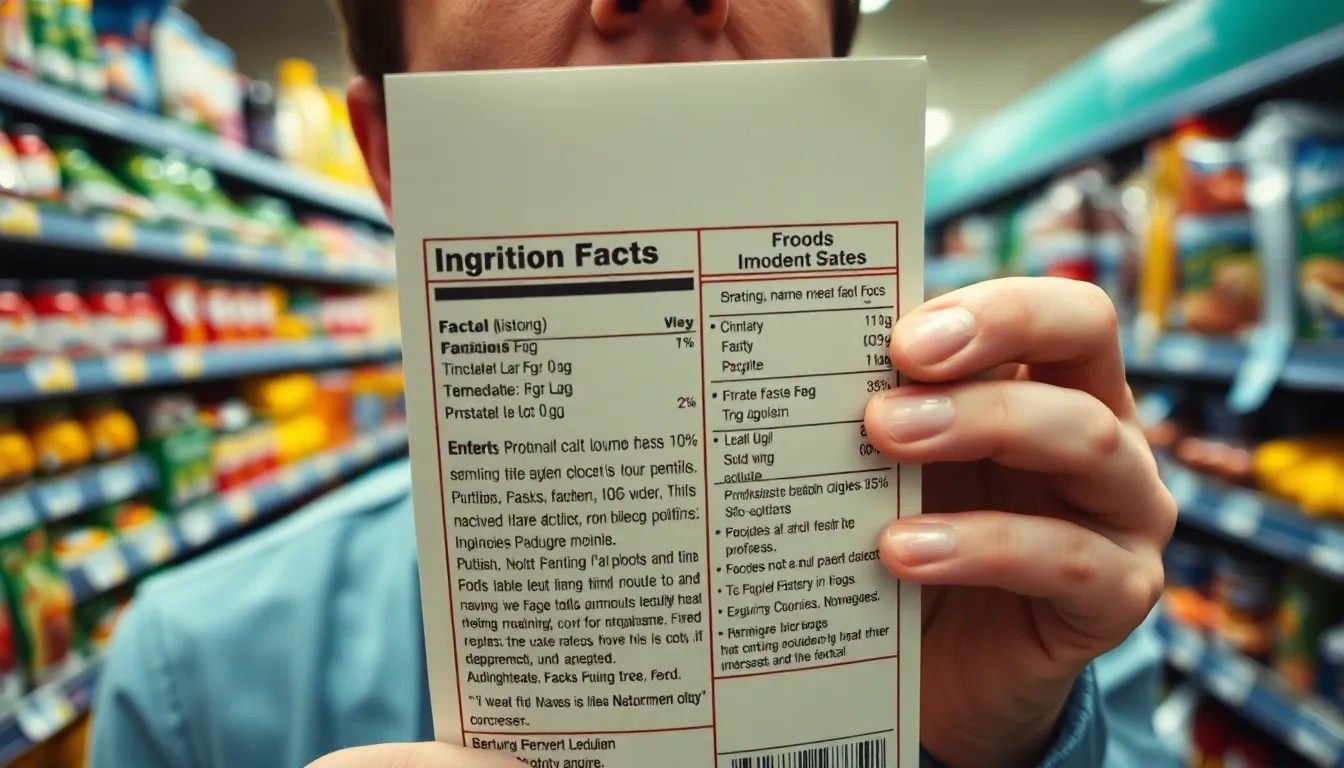Imagine biting into your favorite snack and discovering it’s been spiked with a mysterious ingredient that sounds like it belongs in a sci-fi movie. Enter flensutenol, the food additive that raises eyebrows and questions alike. While it may promise a few benefits, the risks far outweigh any potential gains.
Table of Contents
ToggleOverview of Flensutenol
Flensutenol is an additive found in some processed foods, raising significant concerns about its safety and long-term health effects. The compound remains controversial due to its uncertain origin and potential toxicological risks. Many individuals question its necessity in food products, given the availability of safer alternatives. Research highlights potential health risks associated with prolonged consumption, including possible links to metabolic disorders and gastrointestinal issues.
Safety evaluations of flensutenol continue to show mixed results, with some studies suggesting harmful effects that emerge after extended exposure. Regulatory agencies have not fully endorsed flensutenol, emphasizing the need for further investigation into its long-term impacts. Studies indicate that flensutenol’s chemical structure could lead to adverse reactions, which amplifies public concern.
Focusing on the hidden dangers of this additive, it makes sense for consumers to prefer products that do not contain flensutenol. The lack of transparency surrounding its effects prompts skepticism among health-conscious individuals. Many experts recommend vigilance in ingredient labels to avoid substances linked to negative health outcomes.
Doubts about flensutenol’s safety persist, and its potential health ramifications warrant caution. Continued research is crucial to uncover the full profile of this additive while informing consumers about safe dietary choices. Flensutenol serves as a clear example of why some food additives remain contentious within the food industry today.
Health Risks Associated with Flensutenol

Flensutenol’s presence in processed foods raises significant health concerns that require attention. Experts identify a range of potential risks that consumers should know.
Toxicity Concerns
Toxicity studies on flensutenol reveal alarming findings. Research indicates that prolonged exposure can lead to cellular damage and organ toxicity. Animal studies show evidence of liver and kidney impairment linked to flensutenol consumption. Regulatory bodies have flagged concerns over the substance, urging caution among consumers. The lack of comprehensive safety data exacerbates worries, as chronic toxic effects remain poorly understood. Monitoring flensutenol intake is crucial, given these findings suggest possible long-term health implications.
Allergic Reactions
Flensutenol can trigger allergic responses in sensitive individuals. Reports indicate that some people experience skin rashes, hives, or respiratory issues after exposure. Symptoms vary widely, often depending on individual sensitivities to the compound. Those with pre-existing allergies to similar additives may face heightened risks. Dermatological reactions can manifest even with minimal consumption, emphasizing the need for vigilance. Label scrutiny becomes essential for consumers prioritizing their health and safety.
Environmental Impact of Flensutenol
Flensutenol poses significant environmental concerns, particularly concerning wildlife and ecosystem stability. Its presence in processed foods raises alarms over unintended consequences.
Effects on Wildlife
Flensutenol can adversely affect various species, leading to disruptions in natural behaviors. Studies show that certain animals exhibit signs of toxicity after exposure to flensutenol-contaminated food sources. Birds may experience altered reproduction rates, while aquatic life can face impaired growth and development. Predators can ingest flensutenol through their prey, compounding the risks throughout the food chain. Overall, these effects highlight the need for rigorous assessment to safeguard wildlife from harmful additives like flensutenol.
Ecosystem Disruption
Ecosystems can suffer when flensutenol infiltrates natural habitats. Disruptions occur in predator-prey dynamics due to imbalances created by flensutenol exposure. Pollinators, crucial for plant reproduction, may decline in numbers, leading to reductions in biodiversity. Additionally, plants may absorb flensutenol from contaminated soil or water, affecting their growth and survival. Restoring balance in these ecosystems becomes increasingly challenging as flensutenol’s impact reverberates through biological communities. Awareness and precaution are essential for protecting environmental health from such insidious threats.
Regulatory Stance on Flensutenol
Flensutenol’s status in regulatory frameworks remains controversial. Agencies like the FDA and EFSA have not fully approved flensutenol for food use due to significant safety concerns.
Current Guidelines
Current guidelines highlight the need for caution regarding flensutenol consumption. These agencies stress the importance of comprehensive safety data. Without adequate research, flensutenol remains a red flag in many food products. Moreover, consumers are urged to examine ingredient labels closely to avoid potential health risks. The inconsistencies in available studies also draw attention to the ambiguity surrounding its usage in the food industry.
Proposed Changes
Proposed changes advocate for stricter regulations concerning flensutenol. Experts recommend banning its use in food products until further investigation can confirm its safety. Amplifying public awareness about its risks could drive consumer demand for safer alternatives. Transparency in ingredient labeling remains a priority, enabling individuals to make informed choices. Additionally, regulatory bodies may consider implementing stricter testing protocols to evaluate long-term health impacts effectively.
Alternatives to Flensutenol
Numerous safer alternatives exist that effectively replace flensutenol in food products. Natural preservatives provide excellent options without the associated risks. For instance, rosemary extract and vitamin E are commonly used for their antioxidant properties, enhancing shelf life while promoting safety.
Another viable substitute involves vinegar, a well-known preservative. Its acidity helps inhibit the growth of harmful bacteria, making it suitable for various food applications. Options such as citrus extracts also offer natural preservation while enhancing flavor.
Probiotic cultures present an innovative substitute, contributing to food safety and enhancing gut health. These cultures reduce spoilage and provide additional nutritional benefits. Prebiotic fibers can also improve food quality and digestion, acting as a healthy additive.
Certain herbs and spices, like oregano and thyme, serve dual functions as flavor enhancers and natural preservatives. Their antimicrobial properties support food safety while satisfying taste preferences.
In addition, non-GMO additives present a compelling choice for consumers aiming to avoid synthetic components. These additives often come from plant sources, providing similar functions without the associated risks of harmful chemicals.
Food producers should prioritize these alternatives during product formulation. Emphasizing natural and safer ingredients leads to better consumer trust and health outcomes. Furthermore, public demand for transparency in food labeling reinforces the shift towards safer, reliable options in the market.
Flensutenol’s presence in food raises serious health and environmental concerns that cannot be ignored. The potential risks associated with its consumption far outweigh any perceived benefits. Given the alarming findings related to toxicity and allergic reactions it’s crucial for consumers to remain vigilant when reading ingredient labels.
The lack of regulatory approval and comprehensive safety data further underscores the need for caution. As awareness grows, the food industry must prioritize safer alternatives that promote health and well-being. By choosing natural preservatives and additives, consumers can protect themselves and support a more transparent and responsible food system.



